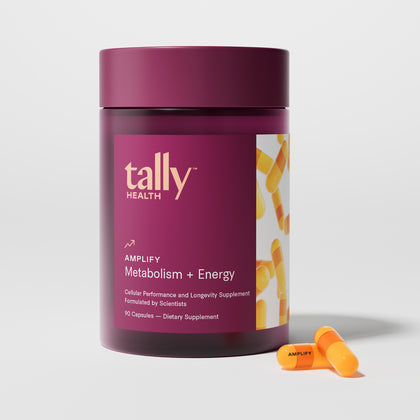

Imagine being able to flip a switch for instant energy optimization—sounds great, right? While the mechanisms of our body aren’t exactly that simple, a fascinating protein complex called adenosine monophosphate-activated protein kinase (AMPK), commonly referred to as a metabolic “master switch,” does come impressively close. The ampk β subunit plays a crucial role in the AMPK complex and metabolic regulation by interacting with glycogen to sense energy status.
Cells break down food molecules into smaller molecules, such as glucose molecules, which are then used in a process called cellular respiration to generate ATP molecules.
The AMPK complex is significant in cellular metabolism as it regulates energy homeostasis, nutrient sensing, and interacts with other proteins, making it a key player in various biochemical processes. ATP synthesis occurs in mitochondria as the final step of energy production, highlighting the importance of the ATP molecule as the energy currency of the cell. AMPK functions as a critical energy sensor that regulates cellular processes such as metabolism and autophagy in response to nutrient availability. Its activation affects cellular homeostasis and has therapeutic potential in various disease contexts. AMPK is widely recognized as the primary energy sensor in mammals.
Acting not only as a guardian for our metabolism and mitochondria, AMPK also plays a pivotal role in an array of processes that pave the way for peak wellness and potentially extended lifespan. AMPK senses changes in cellular energy status by monitoring the ratio of AMP to ATP.
Looking to boost your cellular energy production? Amplify by Tally Health was specially-formulated to support healthy metabolic function by activating AMPK and boost energy by supporting the function of mitochondria.

Unleash your cells’ energy production and cellular energy status with AMPK
Every cell in our body requires a steady supply of energy to function. Cells obtain energy in the form of ATP (aka the energy currency of the cells). Every time you eat, food is broken down and converted into ATP. The body breaks down food into energy sources, such as glucose and fatty acids, which enter metabolic pathways like glycolysis,the citric acid cycle, and oxidative phosphorylation to produce cellular energy. The more ATP, the more energy supply the cell has. When ATP is broken down and used for energy, the end product is adenosine monophosphate (AMP). The citric acid cycle (also known as the Krebs cycle) generates citric acid and other intermediates that are crucial for ATP synthesis and the biosynthesis of amino acids, which are essential for protein synthesis and metabolic processes. AMPK, a critical cellular energy sensor, helps maintain energy homeostasis by regulating the balance between ATP production and consumption.
As cells use up their ATP, AMP levels increase. When AMP increases, this signals to AMPK that cells are in a low-energy state and need more ATP. The cellular energy response triggered by AMPK activation involves turning on pathways that generate more ATP and turning off pathways that require ATP. AMPK activation also suppresses energy consuming processes when cellular energy is low, prioritizing ATP production.
AMPK activation sets off a powerful chain of health-promoting events:
Supports Fat Burning & Blood Sugar Control
AMPK activation kickstarts fat-burning and enhances glucose utilization, which helps maintain glucose homeostasis and supports metabolic health by lowering blood sugar levels and improving energy balance [1].
Enhances Fatty Acid Oxidation
It increases fatty acid oxidation, a key energy-producing process that can supply up to 80% of the body’s energy needs during fasting [2].
Encourages rejuvenating wake ups
Clinical trials revealed that chamomile-containing apigenin may contribute to easier wake ups. A study reported that chamomile extract induced a trend towards an improvement in daytime functioning in those with chronic primary insomnia (difficulty falling asleep or staying asleep) [5].
Additionally, research on apigenin suggests that it does not significantly affect body weight, even though it may improve other metabolic markers.
Boosts Cellular Recycling (Autophagy)
AMPK phosphorylation boosts autophagy, initiating cellular recycling processes that remove damaged components and help keep cells functional and healthy [3]. AMPK mediated phosphorylation reduces protein synthesis by targeting translation initiation factors, which contributes to longevity pathways associated with dietary restriction and mTOR (mechanistic target of rapamycin) inhibition. Additionally, AMPK phosphorylates downstream targets to regulate autophagy and inhibit mTOR signaling, thereby influencing cell growth and metabolism.
Protects Against Cellular Senescence
It protects cells against senescence caused by oxidative stress, helping preserve cellular function and delay age-related decline [4].
Improves Glucose Uptake & Insulin Sensitivity
AMPK activation enhances glucose uptake by promoting the transport of glucose into cells, ensuring efficient energy utilization and improved insulin sensitivity.
Reduces Chronic Inflammation
AMPK inhibits the nuclear factor kappa-b signaling pathway, a major driver of chronic inflammation, thereby promoting a healthier inflammatory balance [5].
Stimulates Mitochondrial Biogenesis
It promotes mitochondrial biogenesis, leading to the creation of new mitochondria and enhancing the body’s capacity for energy production [6].
Regulates Circadian Rhythm
AMPK helps regulate circadian rhythm (our sleep-wake cycle), ensuring that metabolic processes are aligned with the body’s internal clock for optimal function [7].
Modulates Cell Survival & Stress Response
Influencing cell death mechanisms and apoptosis, particularly under energy stress and DNA damage, AMPK activation helps mitigate cellular damage and promotes metabolic homeostasis.

Amp up your longevity pathways with AMPK
AMPK activation has been dubbed “geroprotective” because it significantly suppresses several types of age-related damage along with many processes of biological aging by inhibiting mTOR, a regulator of lifespan in animal models [8, 9]. AMPK also helps control cell growth by inhibiting mTOR signaling, which is particularly relevant in the context of cancer cells and tumor suppression. Growth factor signaling interacts with both AMPK and mTOR pathways to regulate cellular proliferation and metabolism. AMPK also activates FOXO proteins, key regulators of evolutionarily conserved longevity pathways, as well as SIRT-1, a sirtuin protein that regulates DNA repair and the epigenome [10].
AMPK has been shown to have pro-longevity effects in several model organisms [10]. Activation of AMPK increased autophagy in the brain and gastrointestinal tract of fruit flies, resulting in a significant increase in lifespan [11]. In rats, AMPK activation also protects against cellular senescence (a process that generates senescent, pro-inflammatory “zombie cells”) by increasing autophagy and reducing oxidative damage [12]. Small molecules, such as metformin and resveratrol, have been shown to activate AMPK and influence pathways relevant to aging in mammalian cells.
Unfortunately, AMPK activation declines with age, impairing metabolic regulation, increasing oxidative stress and inflammation, and decreasing autophagy and resistance to cellular stress [13]. This cascade of dysfunction can also lead to low-grade chronic inflammation (AKA inflammaging) and metabolic disorders [13]. The good news is that lifestyle and supplementation may restore a loss of AMPK activation.
Molecular cellular biology studies have elucidated the structural and functional aspects of AMPK signaling, providing insight into its molecular mechanisms. AMPK substrates are involved in pathways related to aging and lifespan extension, suggesting that further exploration of AMPK’s role in biological processes like mitochondrial function and epigenetics is needed.
Science-backed tips for AMPK activation

AMPK activation supports metabolic homeostasis by enhancing energy balance and insulin sensitivity. AMPK regulation is crucial for maintaining energy balance, as it is influenced by factors such as adenine nucleotides, cellular energy status, and upstream kinases like LKB1. Calmodulin dependent protein kinase (CaMK) is another important upstream kinase that activates AMPK in response to changes in cellular calcium levels.
AMPK is activated when levels of AMP rise as a result of physiological stressors [14]; fortunately, there are some simple everyday habits that can activate AMPK:
Get regular exercise for improved mitochondrial function:
Human skeletal muscle contractions aid in AMPK activation. Exercise influences muscle AMPK activity by activating AMP-activated protein kinase (AMPK) within human skeletal muscle, which enhances energy metabolism during exercise and plays a crucial role in muscle function and adaptation. Healthy individuals who participated in high-intensity exercise also showed a significant increase in AMPK activation [15].
Consider cold exposure:
In rodents, cold exposure influences energy homeostasis regulation by activating AMPK in mouse skeletal muscle. The brown fat of rats also had the highest AMPK levels of any reported tissue when exposed to cold [16]. Keep in mind that cold exposure right after a workout may impair exercise gains.
Sip rooibos tea:
Rooibos is a South African plant that is also a popular tea. It turns out that this plant may also activate AMPK in skeletal muscle cells. Rooibos extract was shown to increase mitochondrial activity and ATP production [17]. Additionally, by activating AMPK, rooibos tea can influence glucose metabolism.
Adopt a Mediterranean diet:
The polyphenols in extra virgin olive oil and the omega-3 fatty acids (DHA and EPA) found in fatty fish have both been documented to activate AMPK [18, 19]. This activation improves insulin sensitivity, allowing glucose to enter cells more efficiently for energy use, thereby enhancing metabolic health.
Incorporate more fiber into your diet:
Studies have shown the benefits of a high-fiber diet in those with metabolic syndrome, potentially due to the activation of AMPK under nutrient stress conditions [20]. While there are differing ranges on how much dietary fiber to consume in a day, one study found that 25-29 grams of fiber per day was enough to reduce the risk for certain chronic diseases.
Consuming more than 29 grams may offer even more health benefits [21]. A high-fiber diet influences body weight by activating AMPK, which regulates energy homeostasis and reduces food intake, thereby contributing to overall metabolic health.
Consider supplementation:
Evidence suggests that berberine (an ingredient in Tally Health's metabolic and energy boosting supplement Amplify ), quercetin (an ingredient in Tally Health's healthy aging supplement Vitality ), resveratrol (an ingredient in Vitality), and curcumin (the active ingredient in turmeric) can support AMPK activation [22].
What is AMPK?
AMPK (adenosine monophosphate-activated protein kinase) is a protein complex often referred to as the body’s “metabolic master switch.” It is a critical cellular energy sensor that regulates energy homeostasis, metabolism, and autophagy in response to nutrient availability by monitoring the ratio of AMP to ATP.
How does AMPK activation impact cellular energy and metabolism?
When AMPK is activated due to low energy (high AMP:ATP ratio), it turns on pathways that generate more ATP and turns off energy-consuming processes. This helps cells restore energy balance by boosting ATP production, enhancing fat burning, improving glucose uptake, and supporting mitochondrial function.
What are some ways to naturally activate AMPK?
AMPK can be activated through various lifestyle choices, including regular exercise, cold exposure, drinking rooibos tea, following a Mediterranean diet, and increasing dietary fiber intake. Certain supplements like berberine, resveratrol, and quercetin, and also support AMPK activation.
Recommended Supplements
Citations
[1] Long, Y. C., Zierath, J. R., & j et al. (2006). AMP-activated protein kinase signaling in metabolic regulation. Journal of Clinical Investigation, 116(7), 1776-1783. https://doi.org/10.1172/JCI29044
[2] Olpin, S. E. (2013). Pathophysiology of fatty acid oxidation disorders and resultant phenotypic variability. Journal of Inherited Metabolic Disease, 36(4), 645-658. https://doi.org/10.1007/s10545-013-9611-5
[3] Jeon, M. (2016). Regulation and function of AMPK in physiology and diseases. Experimental & Molecular Medicine, 48(7), e245. https://doi.org/10.1038/emm.2016.81
[4] Han X, Tai H, Wang X, Wang Z, Zhou J, Wei X, Ding Y, Gong H, Mo C, Zhang J, Qin J, Ma Y, Huang N, Xiang R, Xiao H. AMPK activation protects cells from oxidative stress-induced senescence via autophagic flux restoration and intracellular NAD(+) elevation. Aging Cell. 2016 Jun;15(3):416-27. doi: 10.1111/acel.12446. Epub 2016 Feb 18. PMID: 26890602; PMCID: PMC4854918.
[5] Salminen, A., T. Hyttinen, J. M., & Kaarniranta, K. (2011). AMP-activated protein kinase inhibits NF-κB signaling and inflammation: Impact on healthspan and lifespan. Journal of Molecular Medicine (Berlin, Germany), 89(7), 667-676. https://doi.org/10.1007/s00109-011-0748-0
[6] Marin, T. L., Gongol, B., Zhang, F., Martin, M., Johnson, D. A., Xiao, H., Wang, Y., Subramaniam, S., Chien, S., & Shyy, J. (2017). AMPK promotes mitochondrial biogenesis and function by phosphorylating the epigenetic factors DNMT1, RBBP7, and HAT1. Science Signaling, 10(464). https://doi.org/10.1126/scisignal.aaf7478
[7] Jordan, S. D., & Lamia, K. A. (2013). AMPK at the crossroads of circadian clocks and metabolism. Molecular and Cellular Endocrinology, 366(2), 163. https://doi.org/10.1016/j.mce.2012.06.017
[8] Menendez, J. A., Joven, J., Aragonès, G., Barrajón-Catalán, E., Beltrán-Debón, R., Borrás-Linares, I., Camps, J., Corominas-Faja, B., Cufí, S., Fernández-Arroyo, S., Garcia-Heredia, A., Hernández-Aguilera, A., Herranz-López, M., Jiménez-Sánchez, C., López-Bonet, E., Lozano-Sánchez, J., Luciano-Mateo, F., Martin-Castillo, B., Martin-Paredero, V., . . . Segura-Carretero, A. (2013). Xenohormetic and anti-aging activity of secoiridoid polyphenols present in extra virgin olive oil: A new family of gerosuppressant agents. Cell Cycle, 12(4), 555-578. https://doi.org/10.4161/cc.23756
[9] Menendez, J. A., & Joven, J. (2012). One-carbon metabolism: An aging-cancer crossroad for the gerosuppressant metformin. Aging (Albany NY), 4(12), 894-898. https://doi.org/10.18632/aging.100523
[10] Burkewitz, K., Zhang, Y., & Mair, W. B. (2014). AMPK at the Nexus of Energetics and Aging. Cell Metabolism, 20(1), 10. https://doi.org/10.1016/j.cmet.2014.03.002
[11] Stancu, A. L. (2015). AMPK activation can delay aging. Discoveries, 3(4). https://doi.org/10.15190/d.2015.45
[12] Ning YC, Cai GY, Zhuo L, Gao JJ, Dong D, Cui S, Feng Z, Shi SZ, Bai XY, Sun XF, Chen XM. Short-term calorie restriction protects against renal senescence of aged rats by increasing autophagic activity and reducing oxidative damage. Mech Ageing Dev. 2013 Nov-Dec;134(11-12):570-9. doi: 10.1016/j.mad.2013.11.006. Epub 2013 Nov 27. PMID: 24291536.
[13] Salminen, A., & Kaarniranta, K. (2012). AMP-activated protein kinase (AMPK) controls the aging process via an integrated signaling network. Ageing Research Reviews, 11(2), 230-241. https://doi.org/10.1016/j.arr.2011.12.005
[14] Mihaylova, M. M., & Shaw, R. J. The AMP-activated protein kinase (AMPK) signaling pathway coordinates cell growth, autophagy, & metabolism. Nature Cell Biology, 13(9), 1016. https://doi.org/10.1038/ncb2329
[15] Torma, F., Gombos, Z., Jokai, M., Takeda, M., Mimura, T., & Radak, Z. (2019). High intensity interval training and molecular adaptive response of skeletal muscle. Sports Medicine and Health Science, 1(1), 24-32. https://doi.org/10.1016/j.smhs.2019.08.003
[16] Mulligan, J. D., Gonzalez, A. A., Stewart, A. M., Carey, H. V., & Saupe, K. W. (2007). Upregulation of AMPK during cold exposure occurs via distinct mechanisms in brown and white adipose tissue of the mouse. The Journal of Physiology, 580(Pt 2), 677-684. https://doi.org/10.1113/jphysiol.2007.128652
[17] Mazibuko SE, Muller CJ, Joubert E, de Beer D, Johnson R, Opoku AR, Louw J. Amelioration of palmitate-induced insulin resistance in C₂C₁₂ muscle cells by rooibos (Aspalathus linearis). Phytomedicine. 2013 Jul 15;20(10):813-9. doi: 10.1016/j.phymed.2013.03.018. Epub 2013 Apr 29. PMID: 23639187.
[18] Rigacci S, Miceli C, Nediani C, Berti A, Cascella R, Pantano D, Nardiello P, Luccarini I, Casamenti F, Stefani M. Oleuropein aglycone induces autophagy via the AMPK/mTOR signalling pathway: a mechanistic insight. Oncotarget. 2015 Nov 3;6(34):35344-57. doi: 10.18632/oncotarget.6119. PMID: 26474288; PMCID: PMC4742109.
[19] Liu, H., Chiu, Y., Wang, P., & Chiang, T. (2019). Omega-3 Fatty Acids-Enriched Fish Oil Activates AMPK/PGC-1α Signaling and Prevents Obesity-Related Skeletal Muscle Wasting. Marine Drugs, 17(6). https://doi.org/10.3390/md17060380
[20] Hu GX, Chen GR, Xu H, Ge RS, Lin J. Activation of the AMP activated protein kinase by short-chain fatty acids is the main mechanism underlying the beneficial effect of a high fiber diet on the metabolic syndrome. Med Hypotheses. 2010 Jan;74(1):123-6. doi: 10.1016/j.mehy.2009.07.022. Epub 2009 Aug 7. PMID: 19665312.
[21] The Lancet. “High intake of dietary fiber and whole grains associated with reduced risk of non-communicable diseases.” ScienceDaily. ScienceDaily, 10 January 2019. < www.sciencedaily.com/releases/2019/01/190110184737.htm>.
[22] Kim, J., Yang, G., Kim, Y., Kim, J., & Ha, J. (2016). AMPK activators: Mechanisms of action and physiological activities. Experimental & Molecular Medicine, 48(4), e224. https://doi.org/10.1038/emm.2016.16











